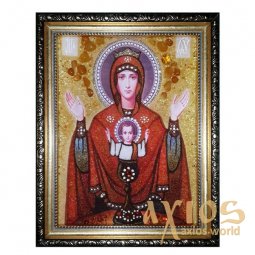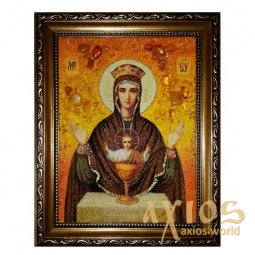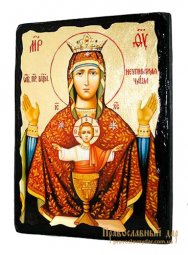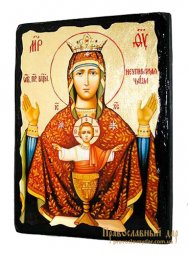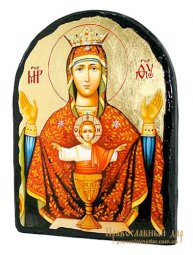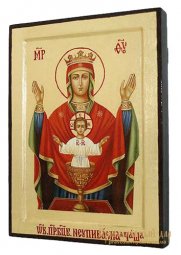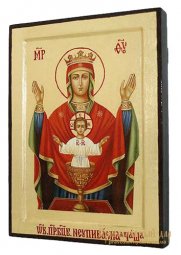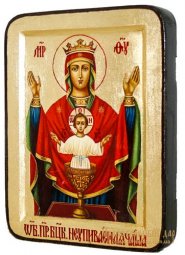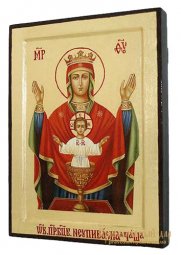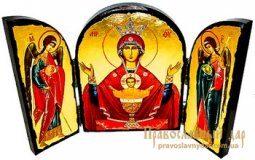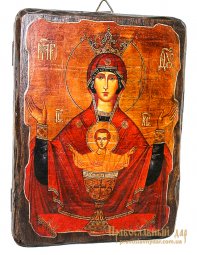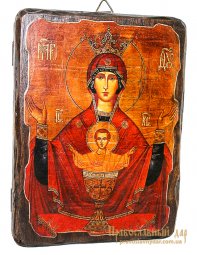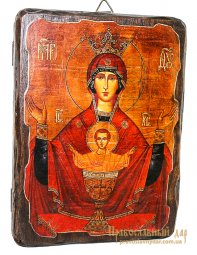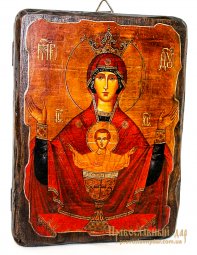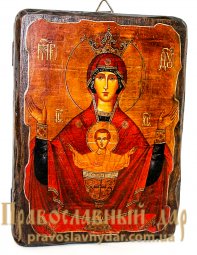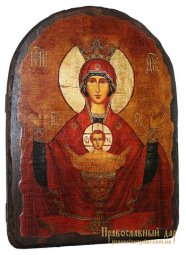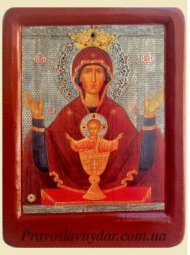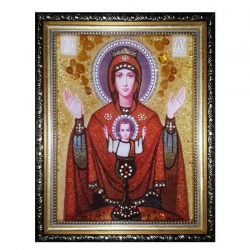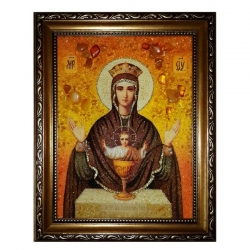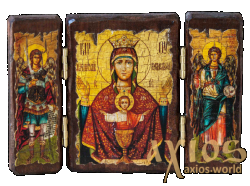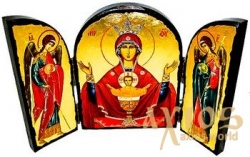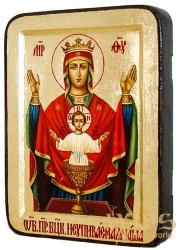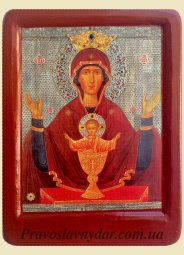Among the many holy icons of the Most Holy Theotokos, there are very unusual icons that have deep symbolism and a great history. One of these is the Inexhaustible Chalice, the memory of which is celebrated on May 18 in a new style.
History
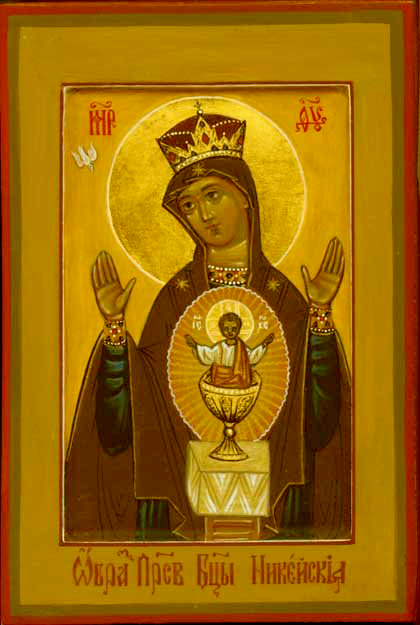 The Inexhaustible Chalice takes its iconographic image from an ancient and very similar image - "Thy womb be the Holy Meal" or "Nicene". This icon became famous as early as the 4th century. According to legend, one ruler, whose name was Constantine, could not get victory over the enemy in any way, and for this he blamed God. In such despair and rage, Constantine, seeing an icon of the Virgin Mary nearby, decided to desecrate it. He threw her on a stone, then began to trample with his feet, but the Lord, for the edification of others, did not leave this case unpunished. At night, in a dream, the Queen of Heaven appeared to him and said that his act would be his destruction. And this prediction came true, and in the next battle, he was killed.
The Inexhaustible Chalice takes its iconographic image from an ancient and very similar image - "Thy womb be the Holy Meal" or "Nicene". This icon became famous as early as the 4th century. According to legend, one ruler, whose name was Constantine, could not get victory over the enemy in any way, and for this he blamed God. In such despair and rage, Constantine, seeing an icon of the Virgin Mary nearby, decided to desecrate it. He threw her on a stone, then began to trample with his feet, but the Lord, for the edification of others, did not leave this case unpunished. At night, in a dream, the Queen of Heaven appeared to him and said that his act would be his destruction. And this prediction came true, and in the next battle, he was killed.
Twenty years later, at the Ecumenical Council, the fathers, who knew about this case, glorified the desecrated icon. And the believers were told that whoever partakes of the Body and Blood of Christ is not deprived of heavenly goods, despite adversity and sorrow.
And the very appearance of the image "Inexhaustible Chalice" happened in 1878 under the following circumstances. One peasant, a retired soldier, who was seized by the passion of drunkenness, and for which he could not even walk, had a phenomenon. An old man appeared to the unfortunate man, who ordered him to go to the monastery of the city of Serpukhov, and there he must pray before the icon of the Most Holy Theotokos - the Inexhaustible Chalice. If the sufferer fulfills the assignment, the elder promised that he would recover. When the former soldier arrived at the monastery, no one knew about the indicated icon, only after a while, it was possible to find an image in the sacristy that was signed - the Inexhaustible Chalice. After worshiping the icon, the peasant recovered not only in body, but also in soul, after this incident the illness of drunkenness left him. In the old man who appeared to the peasant, he recognized Saint Barlaam - the builder of this monastery.
Description of the icon
The first thing that catches your eye at the sight of the icon is that the Infant Christ is standing in a small bowl, and His Most Pure Mother is depicted with her hands raised up. What is the reason for this composition? You need to understand that the cup depicted is the Chalice of the Sacrament. The Lord in the Holy Gifts is "always poisonous and never hungry", hence the name of the icon, no matter how much we partake, the Cup with the Holy Mysteries will always be an inexhaustible source of grace. And the Mother of God is depicted in a prayer position, because She is the first intercessor for all the suffering and unfortunate.
At the sight of this icon, the first association is that it helps to get rid of drunkenness, and this can be understood, since there have been many cases of grace-filled help. But this is not entirely true, because it is not the icon that helps, but the Lord through the prayers of His Most Pure Mother. And the icon should remind us of the commandment to partake of the Body and Blood of the Savior in order to receive eternal life.
Where can I buy?
The icon "Inexhaustible Chalice" is very beloved by the Orthodox people, its revered lists are in every diocese. Therefore, our online store Axios made sure that everyone could find their own version. The assortment has the largest selection of the Theotokos icons, in particular the Inexhaustible Chalice, the following types are available:
1.made of amber;
2. semi-antique, manufacturing technique completely imitates ancient icons;
3. in gilding of the Greek style;
4. foldable;
5. in an icon case and without.
We have the ability to quickly buy any look - online. Our range of products is wider than in other church stores. Buying an icon "Inexhaustible Chalice" from us, you get not only the decoration of your home iconostasis, but also a family shrine that can be kept for generations.

